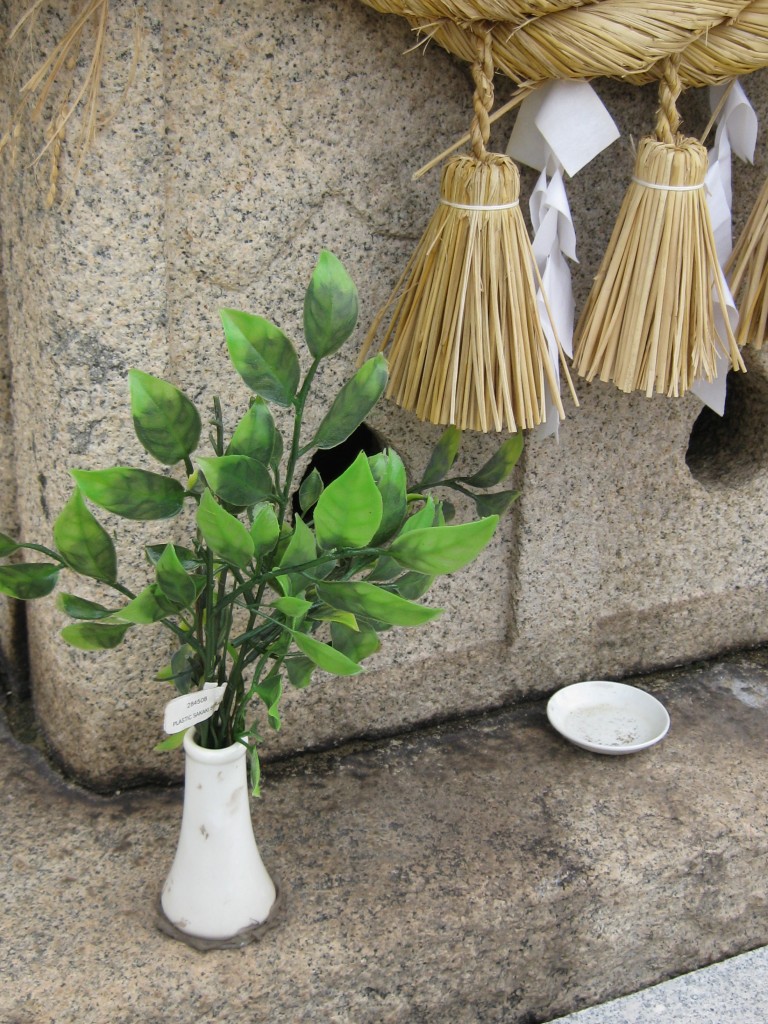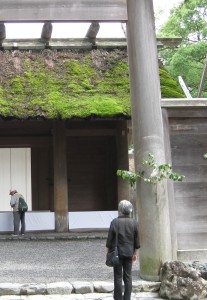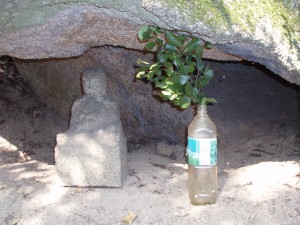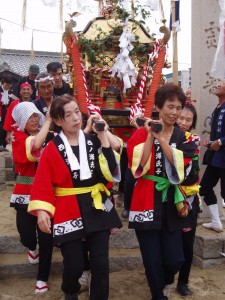 The sakaki branch is common in Shintō ceremonies. It’s used on altars, and it’s used as an offering to the kami. It’s used too as a vehicle into which the kami descends, and as a wand for purification. Performers hold sprigs in ritual dance, and it’s sometimes affixed to buildings or torii to signify the sacred quality. What is it exactly, and why should it be so sacred?
The sakaki branch is common in Shintō ceremonies. It’s used on altars, and it’s used as an offering to the kami. It’s used too as a vehicle into which the kami descends, and as a wand for purification. Performers hold sprigs in ritual dance, and it’s sometimes affixed to buildings or torii to signify the sacred quality. What is it exactly, and why should it be so sacred?

Sakaki pinned to a torii at Ise
Sakaki’s Latin name is Cleyera japonica, a member of the tea family oddly enough, though it has little to do with tea. I’ve never tried brewing it, but something tells me it wouldn’t taste very good!
Plants with point-tipped leaves, such as pines and thorns, were once believed to be the landing point for spirits, and this was no doubt how the association with the sakaki arose. Its evergreen nature, like the Christmas fir tree, must have appealed to ancients as a symbol of nature’s vitality and kami immortality.
Officially the reason for sakaki’s sacred nature is because of its role in mythology. When Amaterasu, the sun goddess, hid in the Rock Cave, a tree was decorated with jewels, swords and mirror as part of the grand festival to lure her out. It worked, and ever since the event has acted as a template for Shinto ceremonies and festivals.
There are two linguistic theories about the origin of the name. One derives from the tree’s evergreen nature, such that it is always thriving (sakaeru). Another sees it as originating as a ‘border tree’ (sakai), used to mark off sacred ground. The two theories are not mutually exclusive of course, since the reason for choosing the tree as a marker could be because it was always thriving – even in winter. This would place it in the same category as the evergreen trees of pagan worship in Europe.
All hail the sakaki – a symbol of nature’s ability to thrive! Even now, as we approach the midwinter solstice, it stands proud and green, a reminder of the new growth to come… with temperatures plunging and days shortening, it may be hard to believe, but one fine day nature will renew itself and the world will be green once again.

Sakaki offering in a plastic bottle to mark a sacred statue

Sakaki decorating a mikoshi at a festival

Leave a Reply